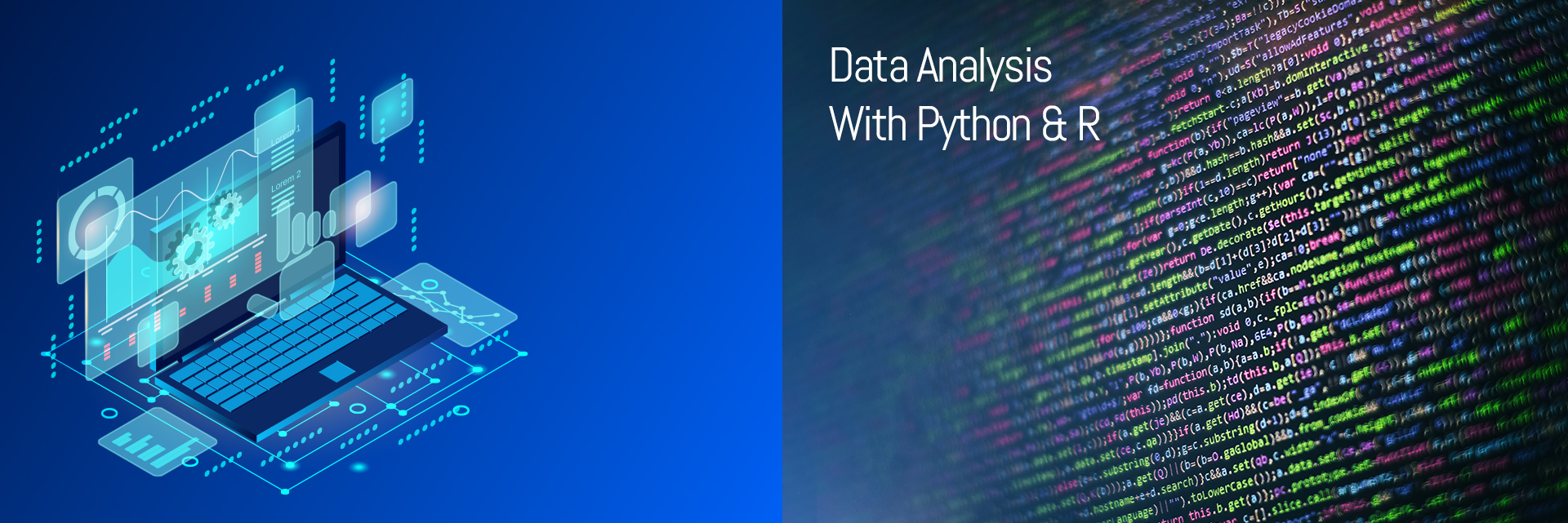Introduction
It’s not uncommon in the Data science or analytics field to argue on which programming language to use Python or R. Though both open end languages basically work on the same lines in bringing future to life through data-driven innovation, Artificial intelligence, machine learning, there are points to consider on their pros and cons.
From automation, business analysis, big data exploration, both these languages work on the same lines that are best suited for Data science tasks.
Python is the favourite language of many programmers and coders. It’s an object-oriented programming language that comes just after Java and C in the most popular languages.
While on the other hand R has its roots more towards statistical analysis and data visualization. A wise agreement to the argument whether its Python or R would be to make the best use of both the languages using them for specific cases, rather than choosing one of them.
Course Duration : 6 months program @ 5 hours/week
Skills
You’ll Gain
➤ Participants will be able to start programming in Python and R.
➤ Getting familiar with Data science projects Pandas, NumPy with Python, and plots used in R projects.
➤ Making meaningful decisions by using Extrapolatory Data Analysis on data.
➤ Familiarising and using tools like a bar charts, box plots.
➤ How to do EDA in Excel.
➤ Task of integrating SQL with Python and R.
➤ Solving real world problems with the help of case studies.

Is this
course for you?
➤ A postgraduate, or a 12th pass out students from any field can join the Python course.
➤ You must know of the basics of any programming language and a knowledge of
statistics and mathematics to understand R better.
Course Pre-requisites
A basic degree and an understanding of statistical concepts and an open mind to explore and learn more about Data is the only pre-requisite to enrol.
Curriculum
Introduction to Python
- Anaconda & Jupyter
- Python Basic Program
Python Data types
- Introduction to Python List
- Introduction and understanding Tuples
- Python List and Tuples
- Understanding Dictionary
- Python sets
Control structure in Python
- Testing your Decision-Making Skills (If else)
- Introduction to Python loops
- Understanding For and While Loop
- Comprehension; Loops in List, Dictionary
- Understanding Python Function
- Map, Reduce, Filter -Using Lambda Functions
- Assignment-Map Reduce Filter
Data extractions website scrapping
- Intro to Data Extraction
- Reading Delimited files and RDBMS data
- Scrapping Websites
Data cleaning for Data analysis
- Imputing Missing Values Techniques
Data visualizations
- Types of Plots
- Matplotlib Basics
- Matplotlib-Marketing Data Plots (Boxplots, Histograms, Scatter)
- Seaborn-Basics – Beautify the plots (Boxplots, histograms, scatter)
- Seaborn-Correlation Matrix
- Aggregators Plots (Bi-variate Analysis) – Bar Charts, Boxplots, Histograms
- Timeseries Plots – Heatmap Plots
Extrapolatory Data Analysis
- Understanding Data and uploading
- Data Manipulation and Analysis
- Data Cleaning
- PPT Presentation to Business Users for Data Insights
Introduction to R
- Installation of R and R Studio
- Understanding R Studio
- Understanding Datatypes in R
- Basics of R
- Introduction to Vectors
- Factors in R
- Introduction to Matrices
Dataframes in R
- Introduction to Dataframes
- Creating Dataframes
- Accessing Dataframes
- Operations in Dataframes
- File Upload into Dataframe
- Introduction to List
Constructs in R programming
- Introduction to Constructs in R
- Relational and Logical Operators
- Conditional Statements
- Understanding Bank File for Credit Card
- Writing Conditions for Credit Card Issuance
- Loops
- Introduction to Functions
- Functions – Built-in
- Create Your own Functions
- Sapply Functions
Visualisations in R
- Introduction to the world of Visualization – R
- R base Plots
- Introduction to ggplot
- Getting Started with ggplots
- Scatter Plots Using ggplot
- Plotting values on ggplot in Scatter plots
- ggplot on Large Datasets
- ggplot as Object
- Plotting Bar Charts using ggplot
- Jitters in ggplot
- Dodge Plots
- Histograms using ggplot
- Timeseries Plots
SQL in Python and data visualization
- SQL Python-Upload Market Data
- Write SQL in Python
- Visualizations in Python- Seaborn and Pandas
- MySQL Database Connection with Python
SQL in R and data visualization
- Upload CSV files in R and SQL Queries
- Data Visualizations in R using ggplot
- Connecting MySQL with R and DML operations
- Connecting MySQL with R and DDL operations
- Case study using Excel
- Building the first machine learning model
Course Brochure
Request for DEMO
